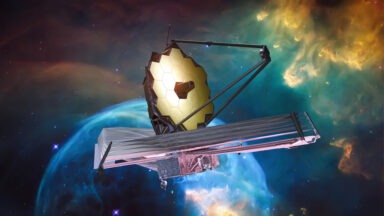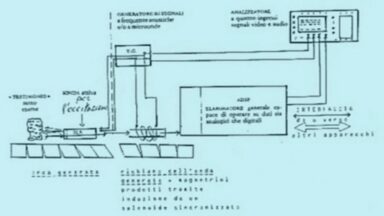A Glowing Rogue Planet Was Spotted Drifting Near Our Solar System

In 2016, scientists stumbled upon a massive object just beyond our solar system, which they believed was a ‘failed’ brown dwarf star. Now, a paper published in the Astrophysical Journal has reclassified it as a rogue planet and it’s got some pretty bizarre characteristics.
Given the rather boring, scientific moniker SIMP J01365663+0933473, this newly classified planet is just below the threshold of brown-dwarfdom, typically set at 13 times the size of Jupiter. Weighing in at a mere 12.7 times the size of Jupiter, this mega-planet also has a magnetic field 200 times stronger than the gas giant we know. And it’s floating through space, untethered to any star.
Scientists observed some bright and powerful auroras near the planet’s polar regions due to its intense magnetic field – think the Northern Lights like you’ve never seen them before. This happens when charged solar particles bombard the planet, before being ionized by its magnetosphere.
The planet is relatively young, about 200 million years-old, and is drifting about 20 light-years away from us – a relatively short distance on a cosmic scale.

Artist’s representation of SIMP Credit:Credit: Caltech/Chuck Carter; NRAO/AUI/NSF
Sometimes rogue planets can become “captured” by another star and join the ranks of its solar system. This planet is currently being pulled by the gravitational force at our galactic center, but if it came close enough to our sun it could be sucked into its gravitational pull. In this scenario, a rogue planet might find itself crashing into other planets in our neighborhood, knocking into them like a pool cue and causing mass chaos.
This is unlikely to happen with SIMP, but scientists believe there could be a multitude of these rogue planets floating through the galaxy and occasionally wreaking havoc on unsuspecting solar systems, ahem, Nibiru?
The discovery of SIMP came about through the detection of its strong auroral radio emissions and scientists hope to use this method to discover more rogue planets. It would have been nearly impossible to have detected it otherwise, due to its lack of a parent star.
As we find more of these rogue planets in our cosmic region, it will hopefully tell us more about our place in the galaxy and what our future trajectory looks like. This prospect is exciting as long as we don’t find ourselves on a terminal collision course.
Will NASA's New Telescope Discover ET Life?

The spectacular first images from the James Webb Space Telescope are finally here and they do not disappoint.
After years of planning, construction, delays, and a cost of about $10 billion, we finally have the first images from the James Webb Space Telescope. Launched in December of 2021, the JWST is the largest and most powerful space telescope ever to be put in space.
Astronomers have waited a lifetime to see with such amazing clarity deep into space. JWST does this by operating in the infrared spectrum; it “sees” light that is outside the visible spectrum of our naked eye and previous telescopes like Hubble.
NASA released photos of the first five targets noting, “These first images from the world’s largest and most powerful space telescope demonstrate Webb at its full power, ready to begin its mission to unfold the infrared universe.”
We caught up with astronomer and Gaia News contributor Marc D’Antonio on the road in Arizona, to break down the images.
“I saw these images and the release of all five different images represent a different aspect of what this telescope can do — absolutely astonishing to me — from galaxies to gas clouds, this telescope hands down, has the ability to show us so much that we don’t understand.”


































